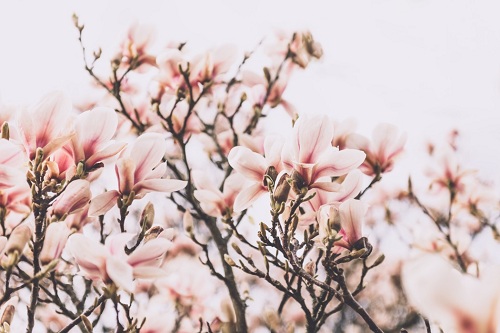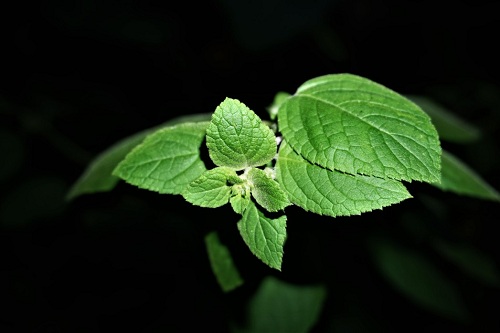Are you a dog lover as well as a nature lover? Do you have a dog in your house and want to grow plants on your balcony or garden? Then you have to go through this article about the plants that do not affect a dog. There are quite a few plants that look good but are harmful to dogs. Few types of daisies fall in this category.
You may be tempted to decorate your garden with such daisies. But since you have a furry friend at your home, you must sacrifice this wish of yours. You must ensure that you grow those plants that do not threaten your dog.
Some medicinal and even edible plants for humans can be harmful to dogs. Hence, it is essential to make your garden dog-friendly. The following table lists ten dog-safe plants with their relevant descriptions.
Best Flowers to Plant for a Pet-Friendly Garden
1. Plant with Polka Dot
Its original name is Hypoestes
Phyllostachys. These plants originate in the southern part of Africa, Madagascar, and the southeastern half of Asia.
Their height is short. It is somewhat like a shrub. But the splash of pink-purple dots on the green leaves adds an amount of uniqueness to your garden. However, it loves to thrive under the shades.
It is grown mainly as a houseplant. People cultivate it for ornamental purposes. It is a perennial plant in tropical and subtropical climates, whereas, in a cooler climate, it thrives in the summer.
2. Coral Bells
Its original name is Heuchera sanguinea. They originate in New Mexico, Arizona, and northern Mexico.
These flowers range from red to deep pink. They look like bells. But their main attraction is their fragrance. Its smell will not only add fragrance to your abode but will also attract hummingbirds and bees.
It is a perennial plant.
Read Also: How To Landscape A Dog-Friendly Garden?
3. Sunflower
Its original name is Helianthus annuus. They originate in Central and North America.
These flowers are big. They can grow to a height of 1.8 meters. These bright yellow flowers turn towards the sun and add a nice-looking design to the garden. The plant grows quite rapidly.
It is a perennial flowering plant that attracts birds when they become old and lose their brightness during the fall.
4. Magnolia Bushes
It comes from the family of Magnoliaceae. It is grown primarily as a bush. Its originating nations are spread throughout Asia and America.
The flowers in this bush range in white, purple, and pink. They have no ill effects on the dog.
They are grown best in the summer.
5. Snapdragons
Its scientific name is Antirrhinum. They are also commonly known as dragon flowers. Its native nations are Canada, Europe, the United States of America, and North Africa.
The funny part of this plant is that when you squeeze it laterally, it seems that a dragon is opening and closing its mouth. Hence, it is named snapdragon.
This plant adds vibrance to your garden with its range of colors varying from red to yellow. These vibrant flowers grow on long stems.
In the sunny season, this plant is grown the best from seeds.
6. Camellia
This flowering plant comes from the family of Theaceae. Their origin is in southern and eastern Asia. They are widely available in the East of the Himalayas, spread from Japan to Indonesia.
Though it is a garden plant and adds beauty to the garden with its pink shade, its leaves are used to drink tea. Even their seeds are helpful. The seeds provide oil utilized for cooking and making cosmetics.
Growing camellia in your garden will need some effort in the first year. Regular watering is essential so that their roots are established properly. But once their roots find firmness in the soil, they are easy to maintain. They keep decorating your garden without expecting much effort from you.
7. Marigold
Its original name is Tagetes. It comes from the sunflower family-Asteraceae, and its originating nation is the Americas. Their natural habitat is spread across the southwestern United States to the continent of South America. However, many of their species are now grown in a natural process worldwide.
Their height varies from 0.1 meters to 2.2 meters. The flowers blooming in this annual plant range in colors such as yellow, orange, white, and golden. A maroon-colored highlight is evident in a few specimens of marigold.
Read Also: Protect Your Dog From These Poisonous Plants In Your Garden
8. Rosemary
Its original name is Salvia Rosmarinus which comes from the Mediterranean region.
It is a shrub. But it produces blue, purple, pink, and white small flowers with green needle-shaped leaves. It seems like a colorful carpet if it’s spread all across your garden. And the best thing about this shrub is its fragrance.
However, this ‘fragrant carpet’ blooms in the tropical climate. The cool climate doesn’t suit them.
9. Nasturtium
It comes from the family of Brassicaceae. An annual flower of its kind, Nasturtium, can grow in your garden without any fertilizers. These come in color varieties, such as orange, red, and white.
This plant is edible. The flavor it emits is a bit spicy.
Note: Be assured that you don’t grow Nasturtium gambelii in your garden. This species is considered endangered in a few parts of the US.
10. Pineapple Sage
Its original name is Salvia elegans. This perennial shrub has its origin in Mexico.
This shrub produces pineapple-shaped red flowers.
This shrub attracts bees and hummingbirds.
Apart from the plants mentioned above, other safe choices will be roses, zinnia, aster, African violet, cilantro, sage, thyme, daylilies, and hibiscus.
To conclude,
If you use fences in your garden, ensure they are visible to your pet. You can even use hanging pots to keep the plants out of their reach.

 DogExpress
DogExpress




























 in Chandigarh, India.
in Chandigarh, India. 
